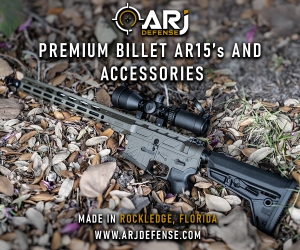Even the military is changing their tactics as urban warfare becomes a primary battlefield. You see a lot more shotguns deployed. You guys are all correct, in a way. What I mean by that is you are all speaking from your own lengthy and practiced experience with a firearm. Many, if not most, in an urban area are not nearly as familiar with a long gun, myself included as I don't own a rifle, YET. In a CQC situation, a rifle isn't much shorter, maybe a few inches or not. Depends on your stock mainly. Also, if you are like myself, you may have multiple family members who are likely going to be scattered in many emergency situations. The biggest thing I worry about is "what could be behind the bad guy(s)?" Or apartments? Rifle can put more innocent people at risk. A rifle may be preferred by a proficient owner, but it's physics with a shotty. It's a large spread, more damage (if it all hits you're getting knocked by 8-9 .32 bullets rather than one rifle caliber), less likelihood of over penetration, and easier to hit what you're aiming at. We're not talking end of the world scenarios, but 1 shotty with 4 rounds is more lethal for a person with the least amount of training.
Sent from my PC36100 using Tapatalk 2
From what I've heard, at across the room distances, the spread isn't much. Personally, I would prefer the tightest pattern that I could reasonably acheive. I want ALL of the pellets to enter the BG and increase the chance of hitting cardio-vascular structure, ending the fight quickly. I'm subscribing to the train of though that if you let off the round with a slightly less than perfect sight picture, (probably not an unreasonable assumption in the heat of combat)you can still be assured that most, if not all of the pellets will be deposited in the perp. I've yet to pattern my SG's yet, which is why they are not "deployed" and my go-to is the pistol. I'll talk about that in a minute.
From the ballistics testing that I've read, if you manage to score a hit with 00Buck, I think any pellet that does not bounce off bone has a good chance of exiting the target. How much energy it will have left in it is a good question that I don't have the answer for, but I'm guessing it probably wont have much. As you go down in buck-shot size, you trade penetration for pellet count, which is not necessarily a bad trade-off, until you reach the point that you can't reliably hit vitals. The cut-off point seems to be at #4 Buck. In 12 ga, one really interesting thing is that the geometry works very favorably for #1 Buck. Stepping down from 00, it's a very small decrease in penetration, with a substantial increase in pellet count. Federal just came out with a #1 Buck load for LE.
Sometime soon I'll get out to the only local range that allows buck-shot. I'll be patterning my 12 and 20 to decide what loads I want to run. My "gut" is telling me that I'm going to wind up selecting the 20 Ga with either #3 or #4 buck. I'm trying very hard to keep an open mind, but the little bit of range time and dry practice I've had are pointing me to the 20. I'm also very interested to find out how the 3" #2B feel in the 20. I'm hoping to do this concurrently with some professional instruction.
So, here's my do-list: 1) Professional training with the pistol: 2) Professional training with the SG, along with patterning. After reading the posts on this thread, I have decided that the responsible thing to do is deploy the SG only after this requirement is met. 3) Evaluate and harden the home entry points (concurrently with #1 and #2 as that's probably the most effective home defense to begin with) 4) Purchase CQB rifle after items 1 through 3 are completed 5) Obtain professional instruction for said CQB, then deploy said rifle.
As a mechanical technician, I've found that you can't have too many tools in the toolbox, so long as you know how to use them all.






